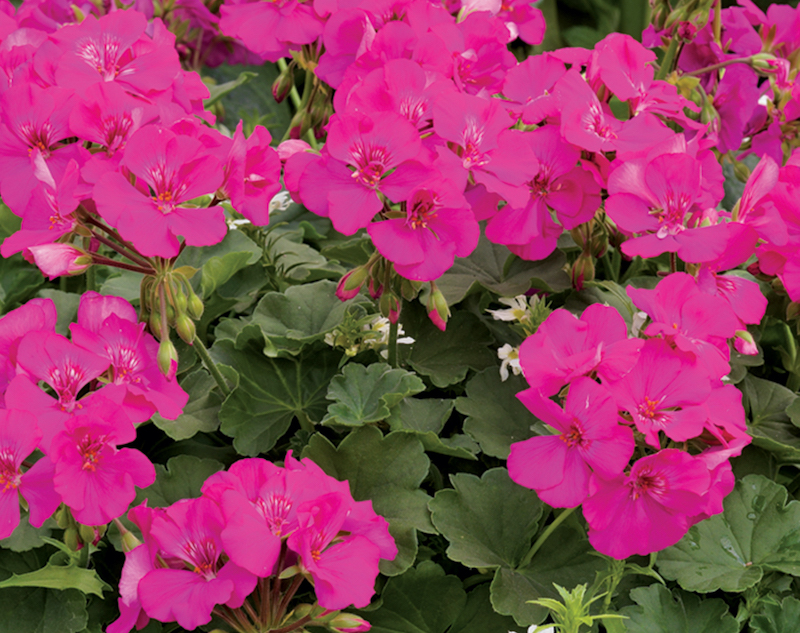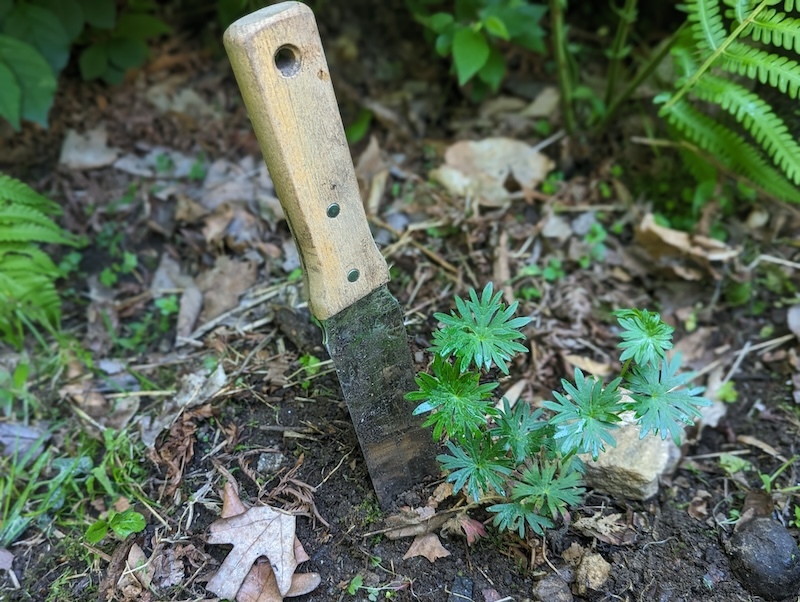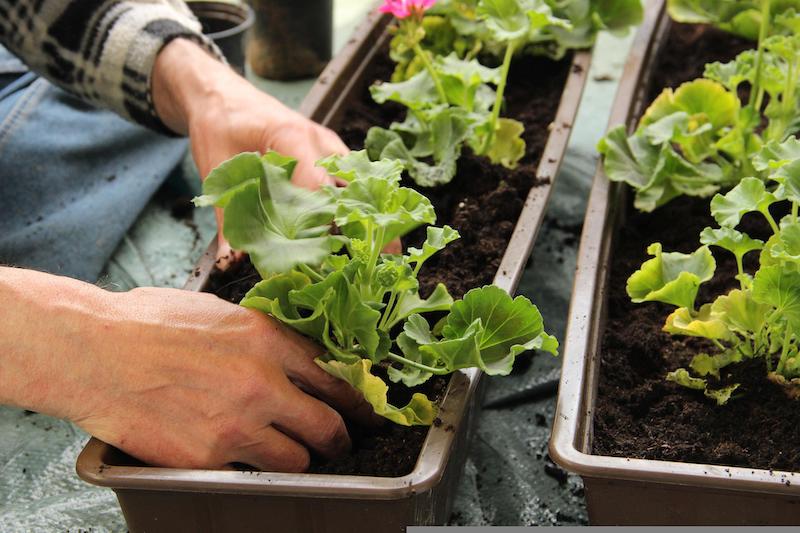Annual geraniums belong to the Pelargonium plant genus and are closely related to the true geraniums, which are the hardy perennial types. Pelargonium species are also known as storksbill, and hardy geraniums are called cranesbill because the seed capsules are curved like a bird’s beak. Pelargoniums are often grown as houseplants, but are hardy in zones 9-11. They are native to tropical regions in southern Africa and Australia and grow as evergreen perennials there. They are long bloomers, often loaded with flowers from spring to first frost.

Hardy geraniums are low-growing spreaders that originate mainly in the Mediterranean region. They are typically hardy in zones 3-8 and are very low maintenance perennials. They grow practically in any soil and are resistant to deer, rabbids and insect pests.

What You Need To Plant Geraniums
- Shovel or spade
- Compost or decomposed manure
- Sunny location
- Nearby water source
Where to Plant Geraniums
Both annual and perennial geraniums are a wonderful addition to borders and containers, where they readily tolerate drought and heat once established. For pelargoniums, choose a sunny spot in your yard where the geranium plant can enjoy full to part sun exposure. Note that regal cultivars prefer partial shade. Grow annual geraniums in fertile, well-draining, neutral to alkaline soil. You can also grow them as a thriller or filler in a container using high quality potting soil with good drainage. The container should be at least 12 inches wide.
For planting hardy geraniums, choose a location with partial to full sun, with at least 4 hours of sunlight each day. It will grow in shady spots, but may become less compact and produce fewer blooms. This perennial will grow in any soil type, but most prefer well-drained, fertile soil. Once established, hardy perennials can tolerate dry soil and longer periods between watering. This low-mounded plant makes a lovely container filler or low border plant.
Geranium Spacing
Geraniums look fantastic planted together in groups. Plants will need enough space between them to ensure proper air flow and access to sunlight. We recommend spacing pelargoniums at least 16 inches apart, or the mature width of the plant. In containers, pelargoniums should be spaced 12 - 15 inches apart. Hardy geraniums will spread moderately and should be spaced at least 2 feet apart to accommodate spread.
Steps To Plant Geraniums
Dig a hole the size of the root ball. You can work compost into the native soil if it is compact or rich in clay. You can add a slow-release fertilizer to the planting hole, but it is not necessary for most native soils. Adjust the planting depth so that the top of the root ball is level with or slightly above the soil surface. Fill in the hole with soil, and add a layer of mulch, preferably compost, around the plant to help conserve moisture. Water in well to fill in all the air gaps around the roots. Over the next few weeks, water when the top inch of soil feels dry to the touch. This is usually every two to three days during the summer.

When to Plant Geraniums
The best time to plant pelargoniums is after the risk of frost has passed, usually in May. Because pelargoniums are not frost resistant, they should not be planted outside when it is cold. Allow new or young plants to acclimatize to the outdoors a few weeks before planting. In frost-prone climates, pelargoniums will need to be brought indoors or stored in a greenhouse to overwinter.
Hardy geraniums can be planted all year round, although fall planting will help the plant establish more quickly. Geraniums planted in summer will require more frequent watering until the roots have a chance to settle in.
Transplanting Geraniums
Every spring, you can repot annual geraniums in a larger container with fresh soil to keep them vigorous and encourage flowering. Except for a few varieties (e.g., P. 'Ardens'), pelargoniums cannot be divided. However, they are easy to propagate by cuttings. Take a cutting 4 - 6 inches long from your plant just above a leaf joint off the main stem. Remove all but the top two or three leaves and any flower buds on the cutting. Add some potting mix to a container, poke a hole in the soil, and plant the cutting about 1 inch deep. Keep the cutting moist, warm, and out of direct sun. Your cutting should develop roots in a few weeks and subsequent new growth.
Hardy perennial geraniums, on the other hand, are easy to divide. Dig up the plant and shake the soil off the roots. Using a sharp spade or garden knife, cut the mother plant in half or quarters. Division should be done in spring and autumn, when the plant is not actively growing, and is usually only necessary every 3 to 5 years. Many hardy geraniums readily self-seed, which can be an easy way to acquire more plants.
 |
Author Jessica Mercer - Published 7-24-2022 |
